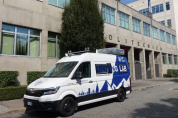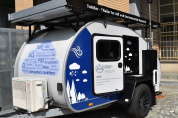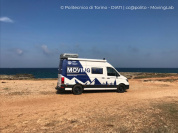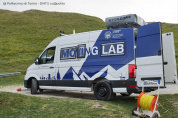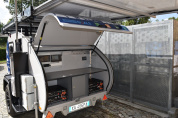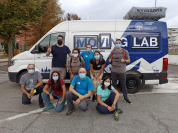cc-moving-lab
Coordinator: Prof. Marco Piras
Presentation
This mobile laboratory is an innovative solution that combines the accuracy of the measurements of a traditional research laboratory with the flexibility of a motorized vehicle.
This mobile laboratory is an innovative solution that combines the accuracy of the measurements of a traditional research laboratory with the flexibility of a motorized vehicle.
The cc-moving-lab consists of a van and a module for air pollution research (TrAIRer). The VAN is a real field laboratory, in which it is possible to process data in real time, to install sensors for motion capture and to transport other elements of the moving-lab. In particular, it is equipped for measurements of consumption, emissions and variables of the motion of a vehicle and for measurements of the quality of environmental matrices (air, water and soil), useful for monitoring and subsequent implementation of appropriate technologies for minimizing anthropogenic impact. The laboratory is also used as a support to field-based teaching.
The TrAIRer (TRailer for AIR and Environmental Research) is capable of monitoring, with high temporal resolution, gas, dust, weather conditions and noise. Energetically autonomous thanks to a photovoltaic system, which allows its use even in places with little anthropogenic conditions, it has been designed by optimizing the auxiliary systems to ensure the operating conditions of measurement. The parameters acquired in real time can be consulted remotely by the research team through the datalogger for data management, specifically programmed. The monitored parameters will include PM1, PM2.5, PM4, PM10, PTS, dimensional distribution, O3, NOx, NO, NO2, NH3, temperature, pressure, humidity, wind direction and intensity, rain intensity, global solar radiation, UV index, Leq, Lpk, sound pressure levels in time and frequency.
It is transportable with both the VAN and other suitable vehicles.
Ongoing projects and activities
The Van was delivered and started its activity in the field in September 2020 (official opening was organized on October 7 2020 during the Sustainable Development Festival), while the Air Quality module arrived at the end of July 2021. Here some of the activities of the first year of operations (12.000+ km and 20+ field trips):
- Gran Sasso (10-12 September), for the final stage of the project On the Trail of the Glaciers on the Calderone Glacier, where DIATI participated as scientific partner
- Torre Santa Sabina (Brindisi), as support to the Department of Architecture and Design within the project Underwatermuse
- Integrated metric survey of the school zone of the city of Mappano carried out by the student team Team Direct
- Integrated metric surveys at Sacri Monti di Varallo e Ghiffa carried out by the Geomatics Group
- Accompanying the GlacierLab mission to the Rutor Glacier (July 2021)
Here a short video that summarizes the activities of the first 12 months (in Italian):

